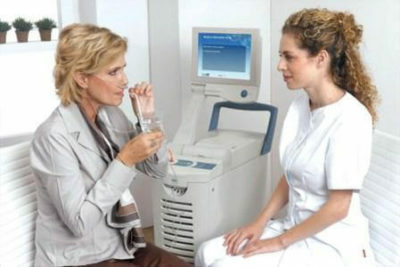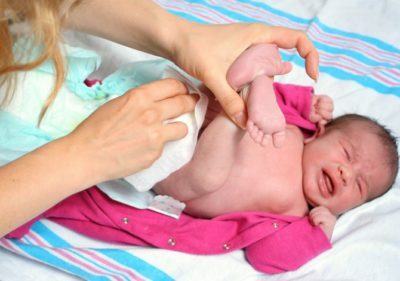1 The essence of the
question Any biochemical blood test includes a basic study that will show the most gross changes in the metabolism of the child's body. The level of erythrocytes( Er).Erythrocytes are red rounded blood cells. They have the form of a biconcave disk. Red color is attached to these elements by the pigment hemoglobin, which contains iron in its composition. It is this pigment that is responsible for the main function of erythrocytes - the transport of oxygen in the body from the lungs to internal organs and vice versa. The norm of this indicator in the blood for a newborn child is 6х1012 / l, gradually its level decreases, and by the year corresponds to the approximate norm of an adult - 4,5х1012 / l. The norm Er for a boy is set in the range 4.0 x 1012 / l-5.0 x 1012 / l, for a girl - 3.7 x 1012 / l-4.7 x 1012 / liter.
- Basophils are leukocytes, which by their activity cause subjective manifestations of inflammation. With allergic and inflammatory reactions, they are destroyed, and their contents enter the tissue. The main content of basophil is histamine - an active substance that promotes the accumulation of tissue fluid in the focus of inflammation with the development of edema. The number of them ranges from 0-1%.
- Eosinophils are needed to reduce histamine in organs and tissues. Since the release of this substance occurs mainly during allergic reactions, which contributes to the development of edema, then with it the level of eosinophils will also increase. The number of them is 0.5-5% of the total number of leukocytes.
- Neutrophils( Ne) and lymphocytes( Lymph) form two crossovers during a person's life. First, the level of Ne is 60%, Lymph-30%, at the age of 5 days there is a so-called cross, in which the number of these elements is equalized by 45%, but then the number of lymphocytes increases to 60% and the number of neutrophils decreases to 30%.At the age of 5 years, a reverse cross-over occurs, and these indicators return to the initial percentage position. Neutrophils are cells that are the first to enter the inflammatory focus and are responsible for the destruction of the infectious agent. The neutrophil count: 2-12%( for newborns up to 5 days of life - up to 20%), segmented( mature) - 47-72%( from 5 days to 5 years - up to 30%).
- Lymphocytes in the blood of a child 5 days-5 years are contained in an amount of up to 60%, then after a cross are 19-37% of the total number of leukocytes.
- Monocytes are not in the blood for long, then they enter the tissues and turn into macrophages - cells that capture and digest the foreign agent( bacteria, foreign particles, etc.).The norm of their percentage is 2-10%.
-
 Gastroenterologist. IMPORTANT: "I beg you, if you began to worry about abdominal pain, heartburn, nausea, do not in any way do gases. .."Read more & gt; & gt;
Gastroenterologist. IMPORTANT: "I beg you, if you began to worry about abdominal pain, heartburn, nausea, do not in any way do gases. .."Read more & gt; & gt;

Recommended to read
- What is the biochemical blood counts of
- The norm of ALT and AST in the analyzes of
- What are the norms of the results in the results of the
- program? Effective agent for gastritis and gastric ulcer
3 Electrolytes in the blood of a child
Electrolytes are ions that are in the blood of a child and have a positive or negative charge. Their main function is to maintain the acid-base composition of the blood, but each has its own specific meaning, which should be discussed in more detail.
ADVICE FROM THE MAIN GASTROENTEROLOGIST
Korotov SV: "I can recommend only one remedy for the rapid treatment of Ulcer and Gastritis, which is now recommended by the Ministry of Health. .." Read testimonials & gt; & gt;
- Sodium( Na +) - an ion necessary for the processes of muscle fiber contraction, transmission of a nerve impulse, maintaining a stable production of hydrochloric acid in the stomach. Its concentration is maintained mainly through the intake of table salt with food. The norm of its content in children's blood is 136-145 mmol / l.
- Potassium( K +) maintains the acid-base balance of the blood, regulates the water balance, participates in the process of nerve impulse transmission and muscle contraction. It is contained in the blood of children in the amount of 3.5-5.5 mmol / l.
- Calcium( Ca2 +) is found in the body mainly in the bone tissue, but can be washed out of it under the influence of the hormone parathyroid glands. Its amount is in the range of 2.1-2.2 mmol / l.
- Chlorine( Cl-) is a member of hydrochloric acid in the stomach, and in the blood maintains acid-base balance. Its level is in the range of 98-107 mmol / l.
- Phosphorus( P3 +) like calcium is part of the bone tissue, its amount is 2.7-4.5 mmol / l.
- Iron( Fe3 +) is found in the blood mainly in erythrocytes, and its content varies from 11.6 to 30.4 mmol / l.
WE RECOMMEND!
For prevention and treatment of gastrointestinal diseases our readers advise Monastic tea. This unique remedy consists of 9 medicinal herbs useful for digestion, which not only supplement, but also strengthen each other's actions. Monastic tea will not only eliminate all symptoms of the gastrointestinal tract and digestive system, but will also permanently eliminate the cause of its occurrence.
Opinion of doctors. .. »
4 Non-electrolyte indicators
- Plasma elements. Biochemistry of blood plasma is represented mainly by proteins. They support the osmotic pressure of blood plasma by binding water, participate in the processes of inflammation and blood clotting. In the case of prolonged fasting, these proteins can split and replenish the caloric deficit, but in this case water imbalance occurs and hunger swells occur. Blood plasma protein content: total protein - 60-80 mmol / l, albumins - 35-60 g / l, globulins - 15-30 g / l, fibrinogen - 2-4 g / l.
- The lipid component of the blood is cholesterol. In children it is elevated only in rare cases with metabolic diseases, its level is on average 2 mmol / l in a newborn child, in a child over the age of 3.5-6.5 mmol / l.
- Enzymatic indices of blood characterize the work of internal organs. The work of the liver can be studied when considering enzymes aspartate aminotransferase( ASAT) and alanine aminotransferase( ALAT), the number of which is on average 20-40 mmol / l. Reflection of the work of this body is also the amount of bilirubin, which is the product of the breakdown of hemoglobin in the liver. Its level is 3.5-20.8 μmol / l in children. The work of the kidneys can be studied through a level of urea, the norm of which is 4.0-7.0 mmol / l.
- C - reactive protein is a protein of the acute phase of inflammation, which is normally absent, but appears in infectious diseases.
- The blood glucose level in a child is in the range of 3.3-5.5 mmol / l.
The pediatrician who will notice the slightest deviation from the norm should make the decoding of the child's biochemical blood test, will make a guess as to what the child may be sick with, and prescribe the necessary treatment.
- 1 Subject matter
- 2 Leukocyte formula
- 3 Electrolytes in a child's blood
- 4 Non-electrolyte indicators
Biochemical blood test in children is a study that is relevant at any age. Thanks to him you can get exhaustive information about the work of internal organs, blood state, hematopoiesis function, etc. Decoding of the biochemical blood test in children should be carried out taking into account that the level of some indicators in a child is normally higher or lower than in adults. Consider the main parameters that are studied in this laboratory study.
Do you have gastritis?
GALINA SAVINA: "How easy is it to cure gastritis at home for 1 month. A proven method is to write down a recipe. ..!"Read more & gt; & gt;



